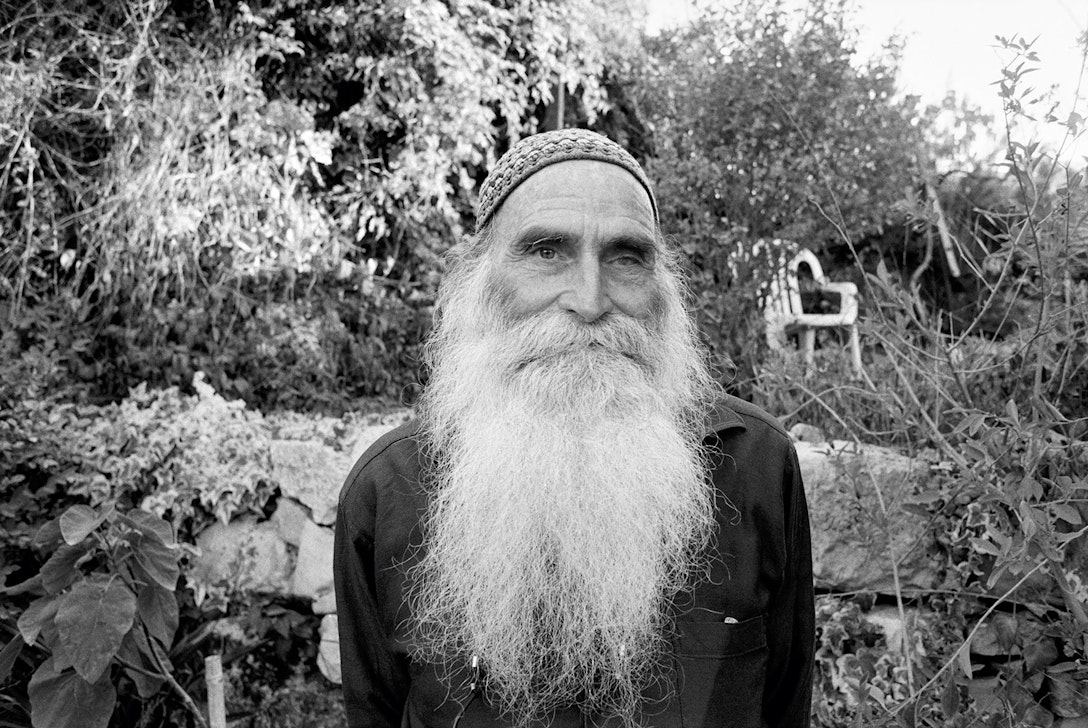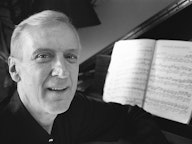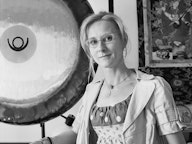
Israel Horovitz
Bat Ayin, Gush Etzion, Israel
OUR CONNECTION TO RITUAL OBJECTS
I waited until everybody was gone and it was quiet. He noticed me and I was standing looking around. And he said, ‘What can I do for you?’
I looked at him and I said, ‘Tell me, what does a Jew need? What do I need as a Jew?’
He said, ‘Mah tzareech yehudi...mah tzareech yehudi?’ He looked at me like this, and he grasped what I was saying and he was so happy! And then he said, ‘Well, you need a kippah [head covering]. I’ll give you one, OK?’ So he gave me a kippah. ‘And you need tefillin [phylacteries]. OK and wait, but you know what? I just....’ He told me some story and gave me tefillin. It was from a person who died and was a nice story but I had no time for that. And so I had a tefillin.
‘What else?’
And he said, ‘A tallit [prayer shawl].’
I bought a tallit. ‘What else?’
‘Well, siddur [prayer book].’
I bought a siddur. ‘What else?’
‘Kitzur Shulchan Aruch [book of Jewish law].’
‘OK, give me one.’ He did.
So I took my things, put them in my bag, and I started to walk. And you know, I had all these little miracles.
Daniel’s Reflection
I met Israel Horovitz at his home in the Jewish settlement of Bat Ayin. He is now a religious Jew who has been experimenting with growing algae for food and fuel.
What does a Jew need to be a Jew? What a great question Israel Horovitz asked when he decided to return to Judaism from his many years of studying and exploring Buddhism in Asia.
For me, the question is even broader: “What objects and rituals do any of us need to practice the spiritual path of our choice?” How important are ritual objects such as a kippah, tallit, tefillin, siddur, or even a kiddush wine cup? In Judaism, we love our ritual objects—passing them down to our children and purchasing new ones at sacred occasions like bar and bat mitzvahs and weddings.
I had never experienced a religion without ritual objects until I spent time with a close friend at her Unitarian Church where the sole ritual is to light a candle within a chalice at the beginning of each service. My own experiences are varied. I love the feeling of being cocooned in my tallit at synagogue during Rosh Hashanah and Yom Kippur services as I hear the chazan [cantor] pleading to God on our behalf. I am grateful to have a beautiful kiddush cup and challah knife from my bar mitzvah. My family holds very sacred a Shabbat candlestick that our grandmother brought with her as a child from Latvia. And yet, I have been exposed to other spiritual followings, such as Unitarianism and Islam, where there is great faith without ritual objects and a minimum of rituals themselves other than prayer itself. (Islam has no ritual objects but does have a washing ritual, ablution, before prayer.)
I did some searching for the history of rituals and ritual objects. What I found is that rituals and ritual objects have both practical and symbolic purposes. One that is very familiar to me from Judaism is the marking of sacred time versus “regular” time, and space (such as in the Saturday night Havdallah service that marks the end of the Sabbath). Ritual objects, such as the cross or crucifix worn as neckwear by Christians, can be used to remind ourselves to be more mindful. Some rituals and ritual objects are to enable us to reach God, or for God to reach us. From a scientific point of view, rituals are shown to increase a sense of control, to reduce grief when negative events occur, and to enhance joyful events. A ritual performed together can also enable us to feel part of a community, and being part of a community has led to survival over human history.
My experience is that we sometimes confuse the ritual object or the ritual itself with to whom or to what we are praying. So, I need to be careful about granting the same status to ritual, and ritual objects, that is meant for the Divine Presence itself. My conclusion is that ritual objects and rituals help me remember to connect to the God of my understanding, to my fellow human beings, to the Earth, and to the universe itself. The rituals I have in my life today that help me do this include praying on my knees twice a day (which is not accepted in Judaism except on Yom Kippur when the cantor lies prostrate on the pulpit during the “Aleinu” but it is a form of humility that I need and which I have practiced since 2006), praying before meals, and journaling each night about what I am grateful for and where I need to improve. When I go to synagogue, or participate in Jewish ritual, I wear a kippah which is a community expectation that also shows humility. These all remind me that I am a small but critical part of humanity and God’s creation.
Thank you to Israel Horovitz who reminded me that ritual objects (and rituals) can be a powerful part of my spiritual journey.
Note: Bat Ayin is in area that Palestinians would consider Palestine. I have decided to allow each person I interview to say where they live and that is what I will show as their location. In the future when I publish Palestinian interviews from the same area I will list their location as Palestine.
Explore the portraits by theme
- happiness
- grief
- addiction
- sexuality
- sobriety
- transgender
- alcoholism
- suicide
- homelessness
- death
- aggression
- cancer
- health
- discipline
- abortion
- homosexuality
- recovery
- connection
- enlightenment
- indigenous
- depression
- meditation
- therapy
- anger
- forgiveness
- Doubt
- interfaith
- worship
- salvation
- healing
- luminaries

